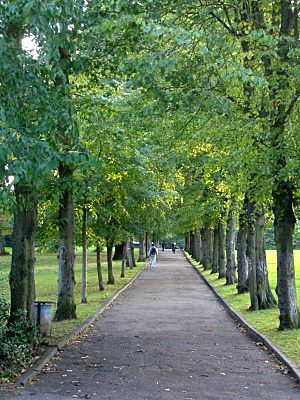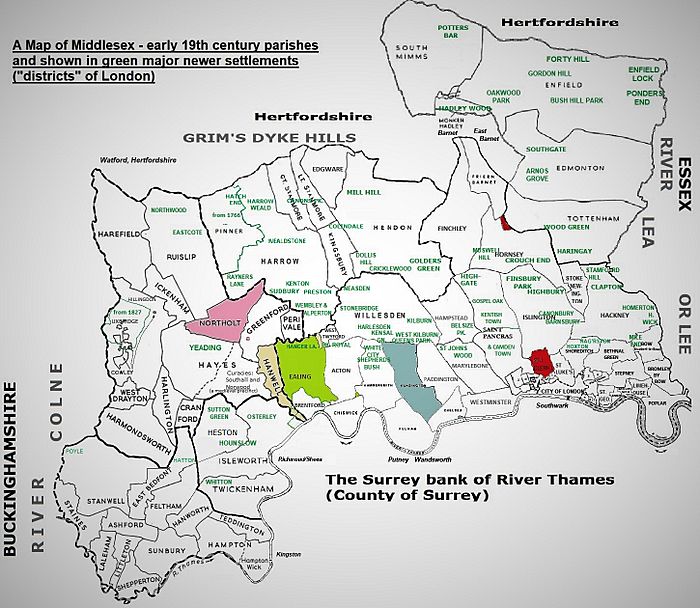Alexandra Park, London facts for kids
Alexandra Park is a big, beautiful park in north London. It's about 80 hectares, which is like 160 football fields! It's won awards for being a great green space. The park is next to areas like Hornsey, Muswell Hill, and Wood Green. It was named in 1863 after Princess Alexandra of Denmark. She married Prince Edward, who later became King Edward VII.
Contents
Exploring Alexandra Park
Alexandra Park has both hilly and flat areas. The hill is covered with trees and offers amazing views. From the top, you can see far across London. The Alexandra Palace building stands proudly at the top of the hill. From its Panorama Room, you can often spot the Crystal Palace Transmitter or the North Downs hills.
Alexandra Palace's TV History
From 1936 to 1981, the BBC sent out TV programmes from a tall mast. This mast was built on one of the palace towers. In 1980, a large fire badly damaged most of the palace. But don't worry, the building has been fixed up! Today, it's a busy place for events and exhibitions.
History of the Park
The idea for Alexandra Park and Palace started in the 1850s. People wanted a place for education, fun, and events in north London. It was meant to be like the Crystal Palace in south London. In 1900, a special law was passed. This law made sure the park and palace would always be open for everyone to enjoy for free.
Horse Racing and Sports
For many years, until 1970, the park was home to horse racing. The racecourse was nicknamed "the Frying Pan" because of its shape. It even had its own train and tram stations to bring visitors. Today, the old racecourse area is used for sports. The Alexandra Park Cricket Club and Football Club play there. They provide great sports facilities for the local community.
Nature in the Park
The park has a medium-sized lake. Many different kinds of waterfowl, like ducks and geese, visit it all year round. The park was named a Local Nature Reserve in 2013. This means it's a special place for nature. It's also important for protecting wildlife in the borough.
Events at Alexandra Park
The park hosts many fun events throughout the year. You can find food, craft, and beer festivals. There's a summer festival and a big fireworks display in November. Every Saturday morning, there's also a Parkrun event.
The Friends of Alexandra Park group organises special walks. You can learn about fungi, trees, wild flowers, or the park's history. They even have bat walks! There's also a farmers market most weeks at the bottom of Muswell Hill.
How to Get to the Park
It's easy to get to Alexandra Park:
- You can take the W3 bus. It connects to Wood Green tube station and Finsbury Park station.
- It's a quick 8-10 minute walk uphill from Alexandra Palace railway station.
- You can also drive, motorbike, or cycle. Car parking for events usually needs to be booked ahead.
Alexandra Park Neighbourhood
There's an area just north of the park that people often call Alexandra Park. It's actually part of Wood Green. This area has its own local website and library. There's also a school called Alexandra Park School. Even though the names of the roads don't always mention Wood, Green, or Tottenham, the area shares a train station and postcode with Wood Green.
See Also



